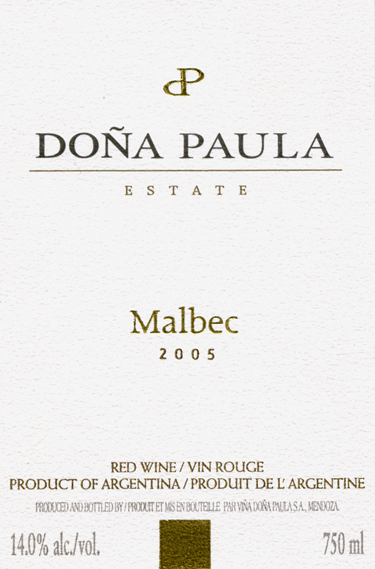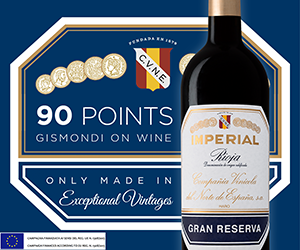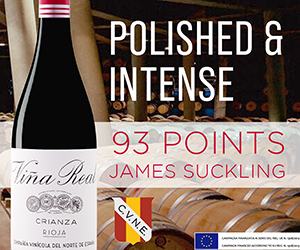Multi-tasking with the help of a computer is about the only way a freelance writer can survive these days and even then the computer can be as dangerous as it is helpful.

Today's column is about malbec, although the first piece I composed has disappeared from my computer. It seems the story got lost among the 10 or 12 programs that were open on my computer and, between phone calls and emails and a major spamming episode, I forgot to save the file before going to bed.
It shouldn't have been a problem because I seldom, if ever, turn off my machine, but apparently a third-party, virus protection program decided I needed protecting late that night and rebooted my computer, unsaved work and all, and just like that my column disappeared.
As it turns out, the one-day-you-are-here-and-the-next-you-could-be-gone theme, fits nicely with my current thoughts on malbec. I'm almost afraid to say anything too encouraging about this delicious grape, and its resulting varietal wine, lest it end up like merlot and shiraz.
In fact, I would seriously consider taking malbec off any label I produced, preferring to use a fantasy name that no one else could bastardize. The shiraz moniker is almost meaningless these days, thanks to countless, tasteless, faceless wines that bear its varietal name. I would hate to see the same thing happen to malbec.
The origins of malbec may be firmly planted in France, but its future appears to lie elsewhere. During the first half of the 20th century, pressac, as it's referred to along Bordeaux's left bank, was primarily a blending grape and most of the classified growths contained some percentage of it blended with merlot, cabernet sauvignon and cabernet franc.
After the great frost of 1956, and the fatal damage it inflicted on so many vines, things were never the same. Forced to replant their vineyards, many growers chose to avoid the malbec altogether because of its susceptibility to frost, mildew and rot. Thus supplanted by the fruitier merlot, malbec is little more than a bit player in the modern-day Bordeaux blend.
Farther south in the warmer appellations of Cahors, Buzet and Cotes de Duras, many growers remain faithful to malbec or cot as they refer to it. While it can be a slightly richer, rounder version of the Bordelais malbec, it is not a wine New World drinkers are rushing to buy.
There are isolated pockets in Chile, but the centre for production is Argentina, where over 20,000 hectares are currently in production. There, at altitude, the power packed red grape is winning over consumers with its savoury, earthy black fruit flavours. Today we look at six different expressions from South America.
We begin with the Santa Julia Malbec 2005. When I first reviewed this wine, it was $10.99 and I thought it was good value. Now this juice, with soft, dry fruit flecked with tobacco, chocolate, pepper and savoury, black cherry flavours, is two dollars cheaper. Load up. Great value.
Viu Manent Malbec 2005 is one of the best inexpensive malbecs made in South America. I love the fat, almost sweet-tasting fruit full of licorice, black fruit and tobacco. It's difficult to beat all that flavour and oomph for the money.
Big peppery, smoky leather, clove and dark chocolate mark the nose of the Los Cardos Malbec 2005. It is dry, round and supple with spicy, clove, peppery, cherry, tobacco, roasted savoury mushroom flavours. Perfect style for food.
Organic wine fans can reach for Jean Bousquet Malbec 2005 from Tupungato, Mendoza. Jean Bousquet's organic grapes are grown at 1,200 metres and produce a tasty, ripe malbec with hints of toast, savoury black fruit and mocha notes. Good value in an everyday, New World red.
More serious is the Dona Paula Malbec 2005 from Lujan de Cuyo, Mendoza. Look for spicy, meaty, plum pudding, coffee, licorice, aromas in a full flavoured, intense, but not heavy red wine. More spice and licorice mix with black cherry, plum and savoury, vanilla flavours. Try with grilled meat entrees.
Similarly structured is the Luigi Bosca Malbec Reserva 2004. Ripe, round, smooth textured with fine acidity, it offers up vanilla, coffee, plum, black cherry, peppery, savoury tobacco flavours with a touch of licorice and orange on the finish. Fine styling and intensity makes this malbec a winner.
Mmmmmm Malbec
SANTA JULIA MALBEC 2005, MENDOZA, ARGENTINA
Price: $8.99
UPC: 07791728000160
Score: 86/100
Remarks: Great value, party red.
VIU MANENT MALBEC 2005, VALLE DEL COLCHAGUA, VALLE DEL RAPEL, REGION DEL VALLE CENTRAL, CHILE
Price: $12.99
UPC: 07804314945094
Score: 87/100
Remarks: Viu Manent has a reputation for its fat, almost sweet-tasting malbec.
LOS CARDOS MALBEC 2005, UGARTECHE DISTRICT, LUJAN DE CUYO, MENDOZA, ARGENTINA
Price: $14.50
UPC: 0836950000018
Score: 86/100
Remarks: Simple, easy-sipping style for food.
JEAN BOUSQUET MALBEC 2005 ORGANIC, TUPUNGATO, MENDOZA, ARGENTINA
Price: $15.99
UPC: 0879716000013
Score: 87/100
Remarks: Good value in an everyday, organic, New World red style.
DONA PAULA MALBEC 2005, LUJAN DE CUYO, MENDOZA, ARGENTINA
Price: $21.50
UPC: 0836950000056
Score: 89/100
Remarks: Peppery, licorice, black cherry, plum, savoury, vanilla flavours.
LUIGI BOSCA MALBEC RESERVA 2004, LUJAN DE CUYO, MENDOZA, ARGENTINA
Price: $23.06
UPC: 7791203001231
Score: 89/100
Remarks: Plum, black cherry, peppery, savoury, tobacco flavours.

 quicksearch
quicksearch





